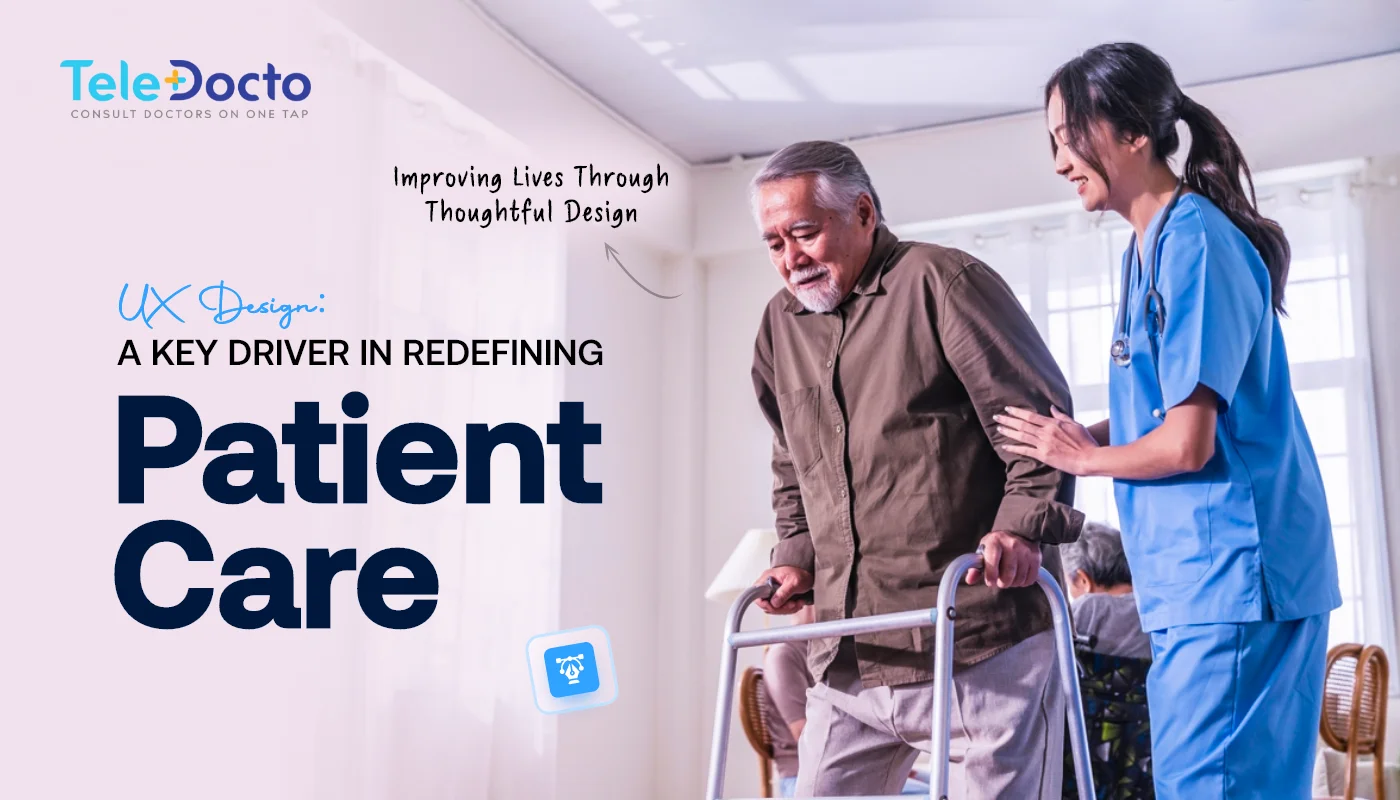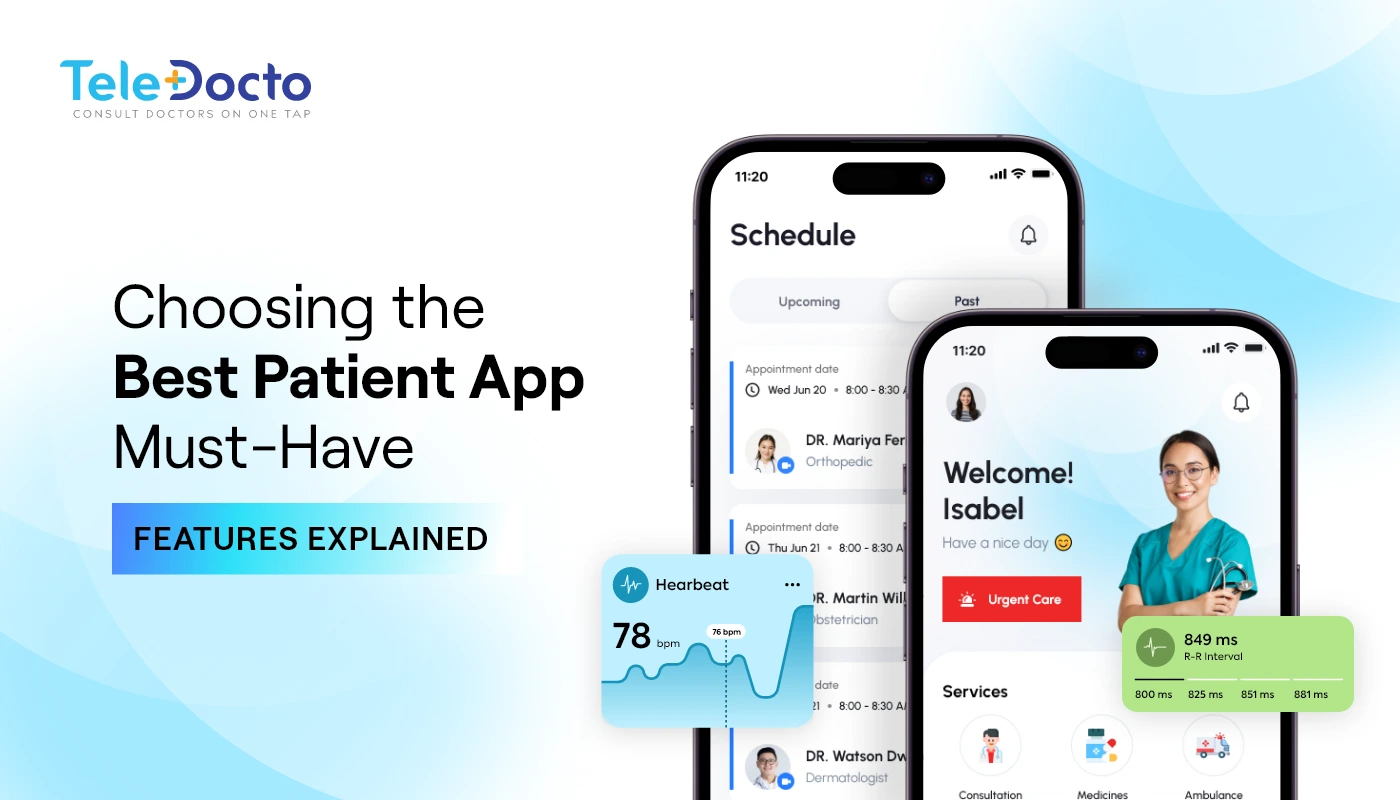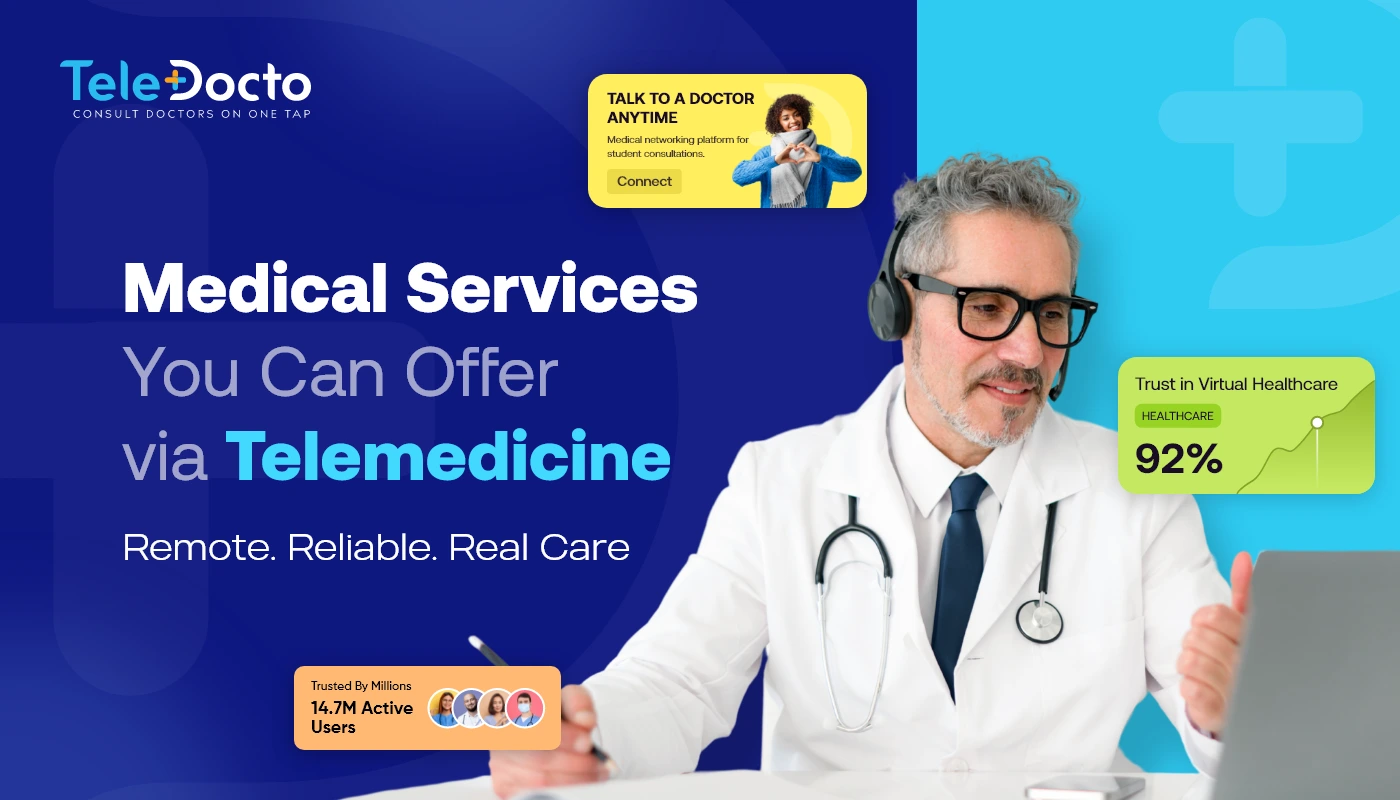
How UX Design is Transforming Patient Care?
Regarding healthcare technology, the UX can make or break an app or system. The right design ensures patients, doctors, or administrators feel comfortable and confident while using the platform. But what does good healthcare UX design actually look like, and why does it matter so much?
Healthcare UX design is critical for making user-friendly healthcare applications and web portals that meet the demands of patients, medical staff, and admin. It’s all about handling common pain points like simplifying complex medical processes, checking the interface is easy to navigate, and allowing users to access everything they need with negligible effort. Beyond usability, a great UX design protects data privacy and security, ensuring sensitive medical information stays safe.
With the right UX, technology becomes a useful tool rather than a barrier, making it easier for everyone involved to get the care they are looking for!
The Direct Impact of UX on Health Management
-
Active Patient Engagement
UX design is key to boosting active participation in healthcare. With easy-to-navigate UX design, patients can schedule appointments, track symptoms, and access important health information easily —all at their fingertips. Engaged users are more likely to follow treatment plans, attend appointments, and report higher satisfaction. The studies show that 72% of patients prefer apps that simplify health management. And, it doesn’t stop there—virtual consultations and educational resources boost engagement, resulting in improved outcomes and overall healthcare experience.
-
Medical Information and Data Management
Managing medical information can be overwhelming, but UX design simplifies it. Clear, intuitive layouts for patient records, medical history, and lab results break down complex data into easy-to-understand charts and progress trackers. Well-organized data can reduce errors by 50%, improving decision-making. In addition, secure and user-friendly systems ensure smooth data sharing, keeping patient’s information accessible and up-to-date for better collaborative care.
-
Efficient Medical Practice
Want to make healthcare practices more efficient? It starts with UX design. Streamlined workflows and intuitive interfaces allow healthcare providers to access patient records quickly, reducing admin time and focusing more on patient care. The apps come with features including voice commands and automated scheduling that can simplify tasks and reduce errors. Furthermore, healthcare professionals make faster, more accurate decisions, improving overall care through a user-friendly design.
Challenges of UX Design in Healthcare
- Healthcare apps can handle sensitive data. However, the challenge is simplifying complex information for both patients and providers without overwhelming users.
- Balancing user-friendly design with strong security features is challenging to maintain trust and compliance. For healthcare apps, it is essential to meet HIPPA compliance for security purposes.
- Designing an intuitive and flexible interface for all users is a significant challenge. Healthcare apps cater to patients, doctors, and staff, each with unique needs and technical abilities.
Wrapping Up
By understanding and prioritizing this, UX designers can create smooth and user-friendly experiences that not only make navigation easier but also lead to more positive healthcare outcomes. In the end, a well-designed platform ensures that patients and providers can connect efficiently, leading to better care and overall satisfaction. So, prioritizing user experience is key to improving healthcare for everyone.
If you want to enhance your practice with a great UX telemedicine app, use a white-label telemedicine app solution like TeleDocto. It has the ability to optimize clinical workflows, offer advanced quality care, and decrease operating costs.
Experience Our UX-Optimized Telemedicine Readymade App Platform!
Frequently Asked Question
UX design in healthcare focuses on creating intuitive, accessible, and patient-centered digital experiences. It enhances usability, and makes sure that medical apps, portals, and systems meet the needs of patients and doctors. A well-designed UX simplifies complex healthcare processes, promotes better decision-making, and streamlines the overall healthcare journey.
UX impacts healthcare by improving patient outcomes, enhancing communication, and streamlining workflows. It reduces user errors in medical apps, builds trust, and promotes adherence to treatments. By focusing on ease of use and accessibility, UX ensures a better experience for patients, providers, and administrators.
Healthcare UX design engages patients by offering intuitive interfaces, personalized features, and seamless navigation. It empowers users with tools like appointment scheduling, medication reminders, and health tracking. By creating user-friendly experiences, UX fosters active patient participation, improving health management and satisfaction with care.
Healthcare UX design faces challenges like integrating diverse user needs, complying with regulations, and ensuring data security. Balancing accessibility with functionality, handling complex medical information, and designing for a diverse audience with varying tech proficiency are also significant hurdles in achieving effective UX.
UX design best practices in healthcare mobile apps include prioritizing accessibility, user-friendly navigation, and secure data management. Design should focus on clear interfaces, customizable features, and seamless integration with medical systems.
Recent Blogs

Telemedicine has changed the way how patients connect with doctors. From routine check-ups to specialist consultations, more people now expect healthcare to be just a click away. But for hospitals, clinics & startups running a telemedicine platform, the real challenge isn’t just about having the technology. It’s about having enough qualified, licensed providers to meet […] Read more

Patients are no longer willing to stand in long queues or make endless calls just to schedule an appointment or check test results. A patient portal app changes this dynamic, putting essential healthcare services right into patients’ hands and making communication and care management seamless. It gives patients the same level of simplicity and ease […] Read more

Going to the doctor’s clinic is often challenging due to long travel distances, waiting times, and crowds there! It clears that the way traditional healthcare delivery was managed, has certain limitations. Enter telemedicine; not as a replacement, but as a modern upgrade to the healthcare department. From a general consult to specialist care, telemedicine has redefined […] Read more